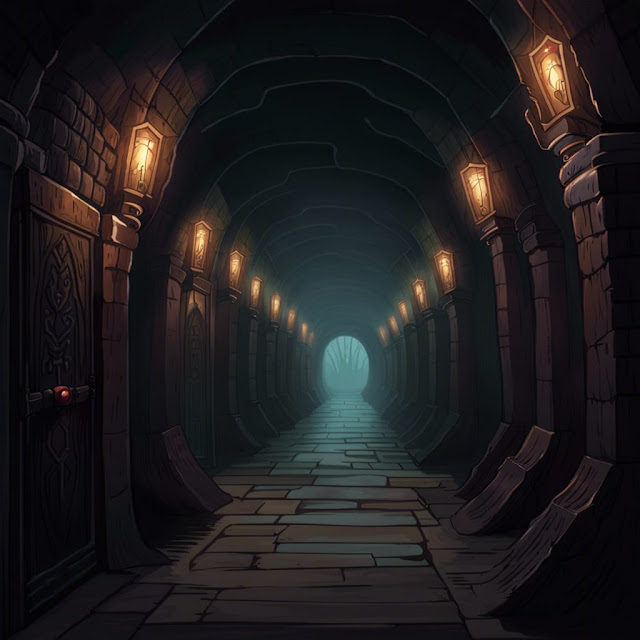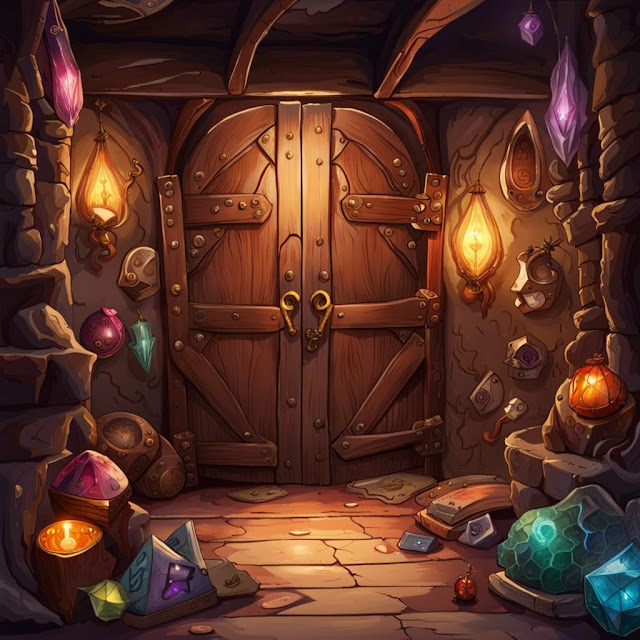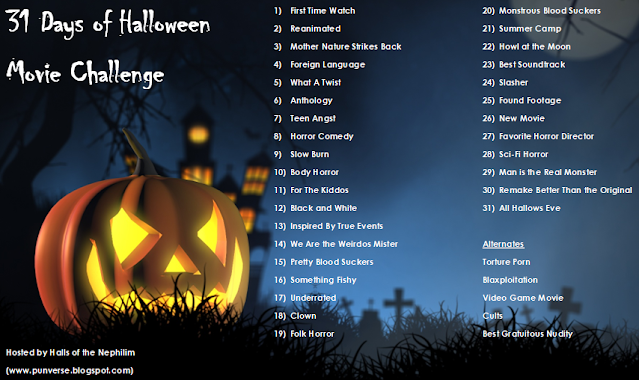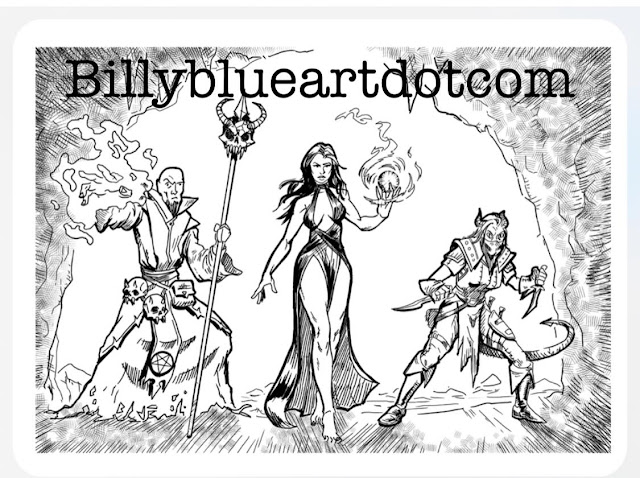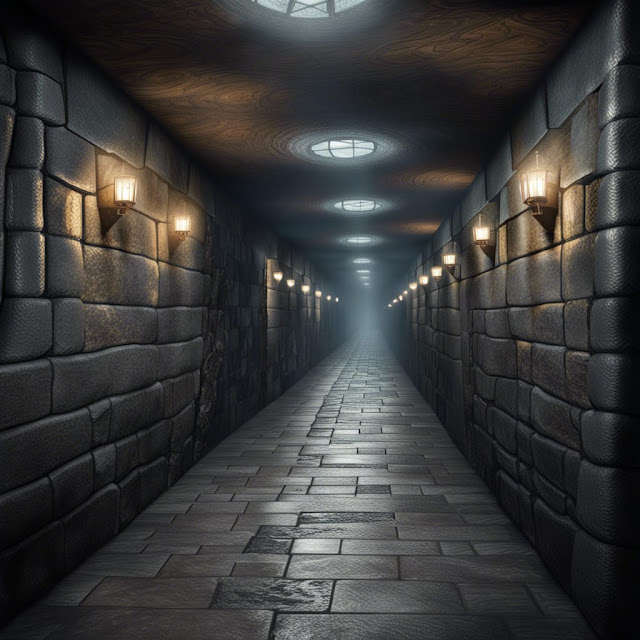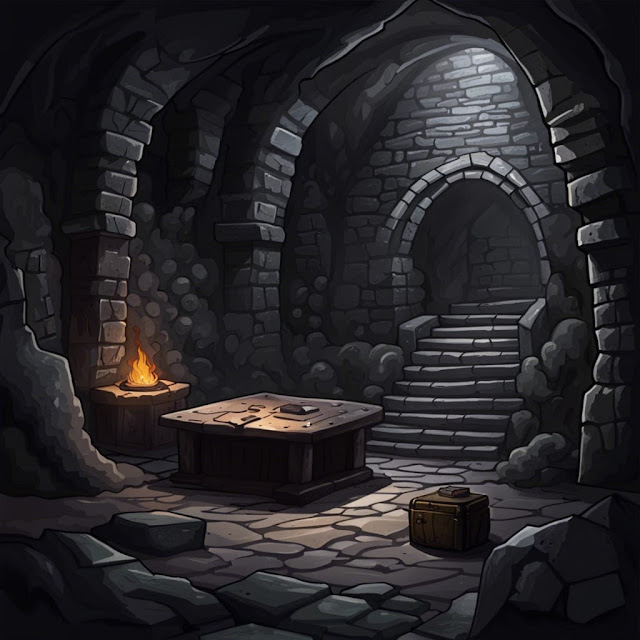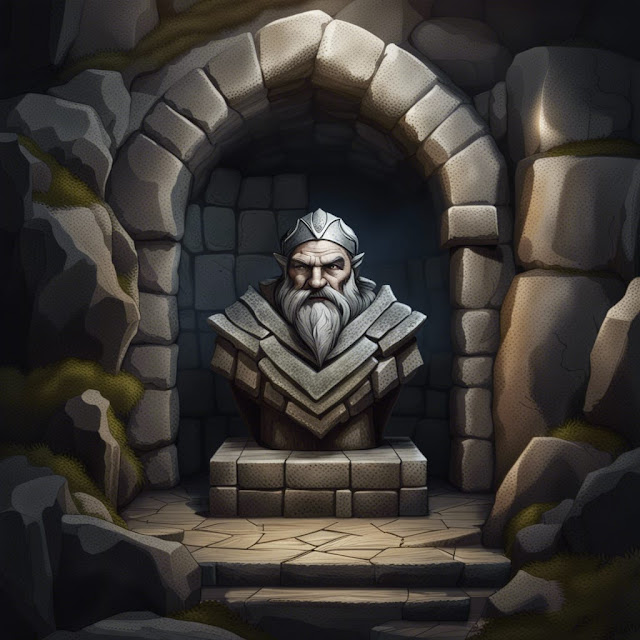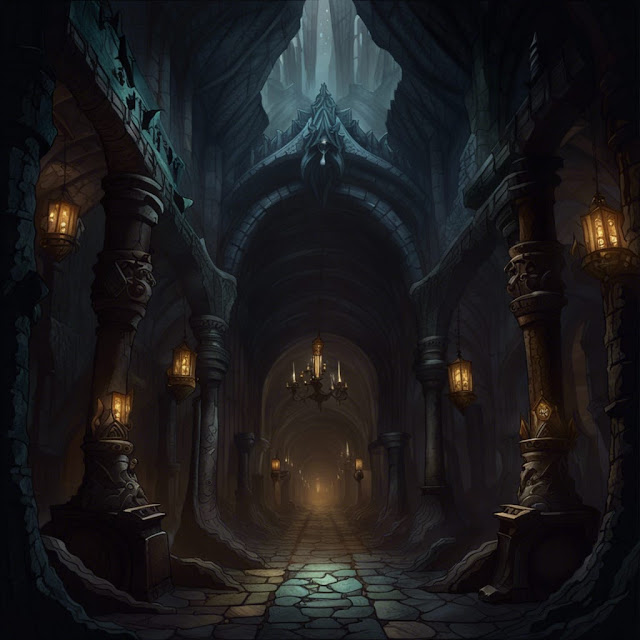1993: Amazing Engine System Guide
1974 is an important year for the gaming hobby. It is the year that Dungeons & DragonsWizards of the Coast, released the new version, Dungeons & Dragons, Fifth Edition, in the year of the game’s fortieth anniversary. To celebrate this, Reviews from R’lyeh will be running a series of reviews from the hobby’s anniversary years, thus there will be reviews from 1974, from 1984, from 1994, and from 2004—the thirtieth, twentieth, and tenth anniversaries of the titles. These will be retrospectives, in each case an opportunity to re-appraise interesting titles and true classics decades on from the year of their original release.
—oOo— In 1993, amidst its constant search for sure fire hit in terms of a new setting or starter set for Dungeons & Dragons, TSR, Inc. published something radical. A universal roleplaying system. A universal roleplaying system that was not only mechanically compatible from one setting to the next, but allowed a player to take the core aspects of his character from one setting to another. Thematically and in terms of genre, the character would be different from one setting to the next as well as being an entirely different Player Character, but the core elements would remain the same. If a player preferred to play a dextrous fighter or a glib investigator, the basics of this would be incorporated into the Player Character no matter what the setting. Further, the experience and improvements gained from roleplaying in one setting would be carried over from that setting to the next, so that the new Player Character would benefit from the play of the old. This was no multiverse setting though. Beyond the core rules the settings were discrete and varied in genre and setting. The system was the Amazing Engine, and if its key idea of experience being transferred between different games can be seen as a failure, having not been replicated elsewhere, it does not mean that it was not an experiment worth developing and it does not detract from the eight campaign settings, or Universe Books, published for it between 1993 and 1994.
In 1993, amidst its constant search for sure fire hit in terms of a new setting or starter set for Dungeons & Dragons, TSR, Inc. published something radical. A universal roleplaying system. A universal roleplaying system that was not only mechanically compatible from one setting to the next, but allowed a player to take the core aspects of his character from one setting to another. Thematically and in terms of genre, the character would be different from one setting to the next as well as being an entirely different Player Character, but the core elements would remain the same. If a player preferred to play a dextrous fighter or a glib investigator, the basics of this would be incorporated into the Player Character no matter what the setting. Further, the experience and improvements gained from roleplaying in one setting would be carried over from that setting to the next, so that the new Player Character would benefit from the play of the old. This was no multiverse setting though. Beyond the core rules the settings were discrete and varied in genre and setting. The system was the Amazing Engine, and if its key idea of experience being transferred between different games can be seen as a failure, having not been replicated elsewhere, it does not mean that it was not an experiment worth developing and it does not detract from the eight campaign settings, or Universe Books, published for it between 1993 and 1994.The Amazing Engine System Guide is the starting point for the Amazing Engine game system. It wastes little time in explain what it is and what its core concepts are, the heart of which are the splitting of the character in two. The traditional Player Character, with its attributes, skills, and abilities, is what a player roleplays in a particular universe. The Player Core is the framework upon which the Player Character is built in a particular universe and it is this Player Core, which is transported from one setting to the next, from one Universe Book to the next. The Player Core has four Ability Pools—Physique, Intellect, Spirit, and Influence. Each Ability Pool has two associated Attributes—Fitness and Reflexes for Physique, Learning and Intuition for Intellect, Psyche and Willpower for Spirit, and Charm and Position for Influence. Attributes range in value between three and fifty. Having two Attributes per Ability Pool means that a Player Character will always have an Attribute that works in a Universe Book setting. For example, in the Magitech Universe Book, Psyche will be of more use than in the Bughunters setting where Willpower will be important.
To create a Player Core, a player assigns a rank, from one to four, for each of the Ability Pools, with one being the best and four the worst. He picks four of the eight Attributes he favours and rolls four ten-sided dice for each, whilst three ten-sided dice are rolled for the other four. Depending upon the ranking of the Ability Pools, a number of bonus points are divided between the two Attributes in an Ability Pool, ranging from fifteen for the best ranking to zero for the worst. No Attribute can be higher than fifty. Lastly, the two Attributes are added together and divided by ten. This determines the number dice rolled during Player Character creation when switching from one Universe Book to another. A Player Core looks like the following. In this example, the player wants to roleplay, brawny, if charismatic characters.
Physique (Rank 1/Dice 8): Fitness 41 Reflexes 33Intellect (Rank 4/Dice 4): Learning 10 Intuition 22Spirit (Rank 2/Dice 5): Psyche 18 Willpower 32Influence (Rank 3/Dice 5): Charm 36 Position 08
To create the Player Character, the player ignores the values rolled for the individual Attributes during the creation of the Player Core. Instead, he divides the number of dice for each Ability Pool between the two Attributes in the Ability Pool. To these dice he adds a total of seven dice between all eight Attributes with no more than a total of five dice being assigned to any one Attribute. These are rolled to give a new value to each Attribute, and then as with the creation of the Character Core, a number of bonus points are divided between the two Attributes in an Ability Pool, ranging from fifteen for the best ranking to zero for the worst. The result cannot be more than fifty, and the Dice ratings for the Character Core do not change. What this means, especially with the addition of the bonus dice, is that a player can adjust for the differences between one Universe Book and another. So that a setting where social status or rank matters would favour the Position Attribute and so a player might assign more dice to that. However, the replication of the process does not feel intuitive, even adding an odd layer of complexity to the process. Lastly, the Stamina—the amount of damage a Player Character can suffer before being rendered unconscious is determined, as is Body, which is the amount of damage he can suffered before being killed.
So, the brawny, but charming fighter type is being shifted from a Universe Book of Swords & Sorcery to one where magic is being studied at an academy. In this case, the player divides the dice from his Player Core between the Attribute pairings, but because the new Universe Book is going to favour the Learning and Psyche Attributes, he divides the bonus dice between them. The result gives the final values for the Attributes for the Player Character in that Universe Book.
Physique (Rank 1/Dice 8): Fitness (Dice 4) 41 Reflexes (Dice 4) 28Intellect (Rank 4/Dice 4): Learning (Dice 5) 38 Intuition (Dice 2) 12Spirit (Rank 2/Dice 5): Psyche (Dice 5) 33 Willpower (Dice 2) 15Influence (Rank 3/Dice 5): Charm (Dice 3) 21 Position (Dice 2) 12
Body: 41 Stamina: 52
This though is the base Player Character in a Universe Book. The latter can also add a Species and the player has to choose a profession and some skills. The Amazing Engine System Guide uses skill groups which break skills done into specialities, from the Basic Skill to the Speciality to the Sub-Speciality. Depending upon what the Player Character is trying to do and the more specialised the task, if the Player Character does not have the Speciality or the Sub-Speciality, he receives a penalty to the task. Some Sub-Specialities can actually be enhancements if the Player Character has them, instead of being penalties if he does not. For example, a gin-running Bootlegger from the Prohibition Era of the nineteen twenties might have the skill of Driving and the Speciality of Automobile. When he is on a bootlegging run, he drives Mabel, a souped-up Ford Model A Coupe. Although a Sub-Speciality, it is treated as an Enhancement when he is driving it. The player selects a number of skills, Specialities, and Sub-Specialities from his character’s Profession first and then any reflecting his character’s hobbies and interests from any skill group. The number for both is determined by the Learning and Intuition Attributes, respectively.
Mechanically, the Amazing Engine is simple. A skill test is a percentile roll versus an Attribute. Penalties are derived from the difficulty of the task, the lack of Specialities and Sub-Specialities, and so on. From just the Amazing Engine System Guide, a Player Character will rarely have more than sixty-percent chance of succeeding at a task, taking into account a high attribute of fifty and an Enhancement from Sub-Speciality. Whilst this is the case, the Amazing Engine not meant to be played alone, but in conjunction with a Universe Book and options within that will increase skill values. The Amazing Engine allows from margin ratings to determine the degree of success of a skill test. This is based on the ones digit of the roll and if it is equal to or less than the Success Margin, it is a critical success, whilst a critical failure would be a failed roll combined with the ones digit being equal to or greater than the Failure Margin.
Combat uses the same mechanics. Once advantage has been checked for—essentially to see if surprise has been gained by either side—initiative is determined by a roll modified by the Reflexes Attribute. Notably, anything beyond the control of the Player Characters will have its own initiative roll, the example being a grenade thrown by the enemy. An attack is rolled against Reflexes, whether melee or ranged, and the attacker has to specify whether the attack is ‘General’, ‘Non-Vital’, or ‘Vital’. ‘Non-Vital’ attacks are more subdual attacks, and are not only harder to hit, but do not inflict as much damage. ‘Vital’ attacks are extremely hard to do and increase the amount of damage done. Weapons can have a Lethality Rating. When digits value of a successful attack roll is equal to or below a weapon’s Lethality Rating the damage is deducted from the target’s Body rating rather than the Stamina rating. Lastly, the Amazing Engine System Guide notes that it is possible for a Player Character to have magic or psionics or other special powers. However, these are not detailed in its pages, but kept specific to the various Universe Books. Arms, armour, and other equipment are given a similar treatment.
Experience is the key to the core concept behind the Amazing Engine. There is advice on having a good play experience too, but in the main the advice is on how to acquire it and then spend it. The means of acquiring it is as you would expect—successful adventures, skill use, and good roleplaying—but the Amazing Engine System Guide details four means of spending it. The first is immediate, spending it to Tax Abilities. This is directly spending it to temporally increase an Attribute on a point per point basis, in blocks of five. This cannot raise the Attribute to more than double its value, but it can lift the chance of success above the sixty percent. The second is to spend it to permanently raise the value of an Attribute. This is more expensive and varies from one Universe Book to another. The third option is improve the Character Core by purchasing extra Dice. This is even more expensive. Lastly, a player can simply transfer accumulated Experience Points to another character based on the Player Core. If a Player Character dies, any accumulated Experience Points are lost, but if the Player Core has any Experience Points, they are not lost.
Physically, the Amazing Engine System Guide is a short book, just thirty-two pages long. It is well written and there are plenty of examples of the rules, including an extended example of Player Core and Player Character creation. The artwork is decent, but of course, generic. The book is notably festooned with the ‘™’ symbol, it appearing every time the name of the rules or a Universe Book appears in the text.
Initially, the Amazing Engine was published as a two-part system. One part would be the Amazing Engine System Guide, the other a Universe Book such as For Faerie, Queen, and Country or Bughunters . It was possible to purchase the Amazing Engine System Guide separately, leading to the situation where there seemed to be more copies of the Amazing Engine System Guide than the Universe Books, but the primary means of obtaining one would be to purchase a combined pack containing the Amazing Engine System Guide as well a Universe Book. Eventually, the Amazing Engine System Guide would be published as part of the Universe Book itself, so that each Universe Book became more of a standalone roleplaying game in its own right.
Ultimately, the problem with the Amazing Engine System Guide is twofold. First, it is not a standalone product. Despite presenting a generic set of rules, those rules are not sufficient to stand on their own and they need a Universe Book to provide all of the details that a fully realised roleplaying game would. Second, it solves a problem that really is not there, the disappointment at losing all of the experience and benefits accumulated through play by switching to another setting and having to play a new character. This is not to say that it does not solve that problem poorly, rather that the need for it to be solved is doubtful. On its own, the Amazing Engine System Guide is simply not enough, but as the core rules and means of character creation for the various Universe Books, the Amazing Engine System Guide is vital—and actually worth it since the various Universe Books are all interesting, often more imaginative than the books which TSR, Inc. would have been publishing at the time. There is even the basis for a proper generic roleplaying game in the Amazing Engine System Guide if TSR, Inc. had wanted to develop it. That was not to be, but an inventive Game Master could draw such details from the full range of Universe Books and create one herself. Ultimately, the Amazing Engine System Guide is good for the mechanical means of access it provides to the eight Universe Books of the Amazing Engine.



















